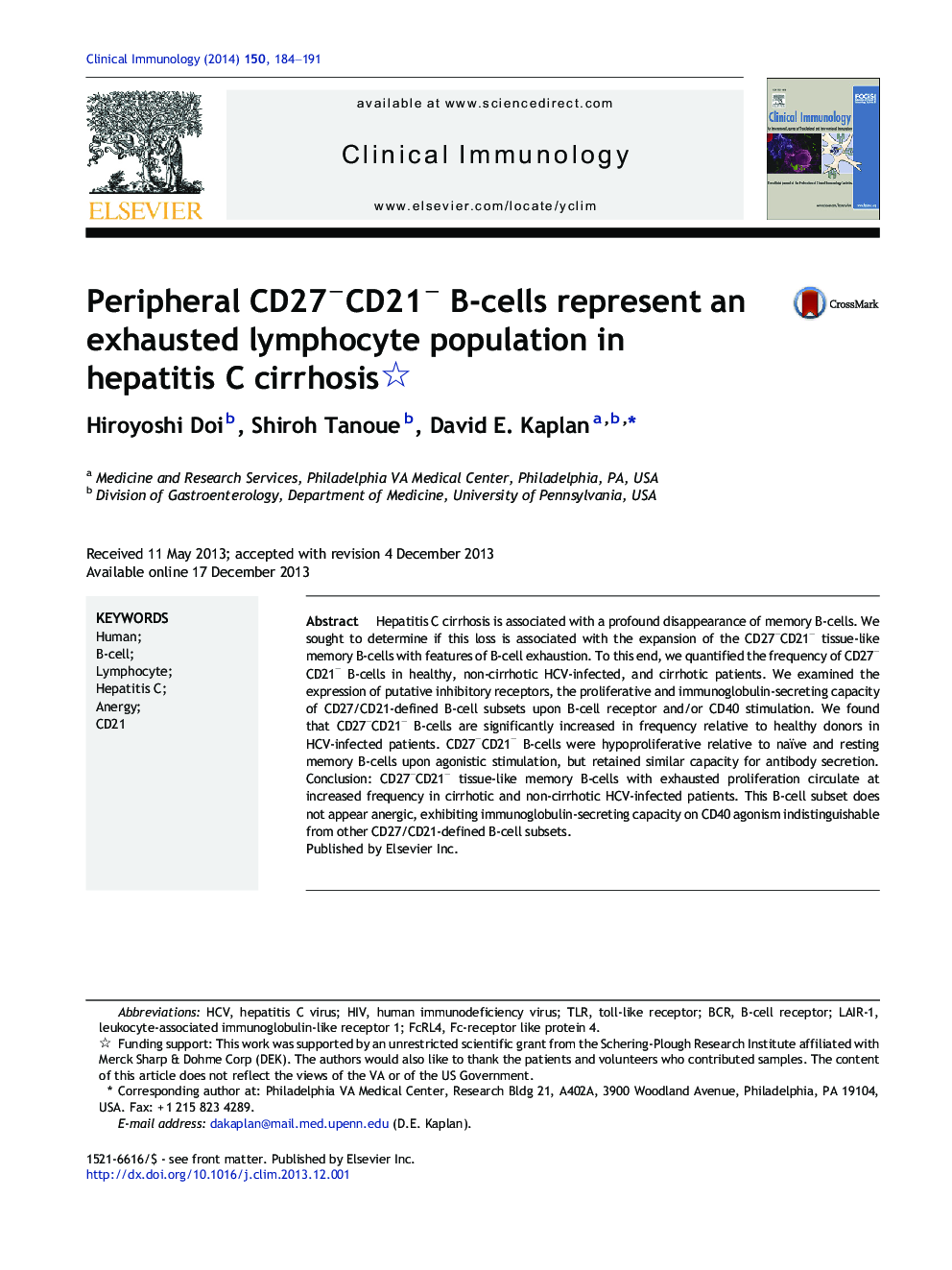| Article ID | Journal | Published Year | Pages | File Type |
|---|---|---|---|---|
| 6087581 | Clinical Immunology | 2014 | 8 Pages |
â¢We examine the frequency and phenotype of CD27âCD21â B-cells in hepatitis C disease.â¢In non-cirrhotic and cirrhotic HCV, the CD27âCD21â B-cell population is expanded.â¢CD27âCD21â B-cells are hypoproliferative relative to other B-cell subsets.â¢Despite hypoproliferation, CD27âCD21â B-cells vigorously secrete IgG, IgM and IgA.
Hepatitis C cirrhosis is associated with a profound disappearance of memory B-cells. We sought to determine if this loss is associated with the expansion of the CD27âCD21â tissue-like memory B-cells with features of B-cell exhaustion. To this end, we quantified the frequency of CD27âCD21â B-cells in healthy, non-cirrhotic HCV-infected, and cirrhotic patients. We examined the expression of putative inhibitory receptors, the proliferative and immunoglobulin-secreting capacity of CD27/CD21-defined B-cell subsets upon B-cell receptor and/or CD40 stimulation. We found that CD27âCD21â B-cells are significantly increased in frequency relative to healthy donors in HCV-infected patients. CD27âCD21â B-cells were hypoproliferative relative to naïve and resting memory B-cells upon agonistic stimulation, but retained similar capacity for antibody secretion. Conclusion: CD27âCD21â tissue-like memory B-cells with exhausted proliferation circulate at increased frequency in cirrhotic and non-cirrhotic HCV-infected patients. This B-cell subset does not appear anergic, exhibiting immunoglobulin-secreting capacity on CD40 agonism indistinguishable from other CD27/CD21-defined B-cell subsets.
